- Home
- Bobby Akart
Economic Collapse (Prepping for Tomorrow Book 2) Page 14
Economic Collapse (Prepping for Tomorrow Book 2) Read online
Page 14
Italy has the eighth largest economy in the world. By comparison, Greece's economy is small, ranking 44th. But when the Greek economy failed a few short years ago, the Eurozone struggled to avert the potential disaster to the Eurozone. Now, Italy, with its government debt to GDP ratio at 132 percent, is set to meltdown.
Europe does not have the financial ability to prevent the collapse of Italian banks. Shares of Italian banks have plummeted to start 2016 as non-performing loans consume their balance sheets. As some analysts have shown, Italian banks maintain an incredible thirty percent of its balance sheets in defaulted paper.
As a result, Italy's largest banks are being monitored for liquidity levels daily by the European Central Bank. With the news, Italians have begun a run on their deposits. A collapse of the Italian banking system would create a domino effect on other financially weak members of the Eurozone—namely, Greece, Portugal, Spain, and perhaps France. The repercussions on worldwide markets is unfathomable.
Puerto Rico
Closer to home (even more so than Mexico since Puerto Rico is a U.S. Territory), without the financial bailout it has requested, Puerto Rico is going broke.
A newly-released financial report for the U.S. commonwealth indicates that Puerto Rico does not have the means to overcome its massive debt. In 2015, Puerto Rican Governor Alejandro Garcia-Padilla acknowledged the island is not able to service its $70 billion debt load. Now, there is substantial doubt that San Juan's government can operate in the long-term.
The reports also reveal that Puerto Rico's Government Development Bank is in danger of missing upcoming debt payments. The island has a $70 billion deficit as of June 30, 2015, or $21 billion more than in 2014, so cash isn't available to pay down its loans. The $70 billion figure is higher than every US state except New York and California.
This huge increase in Puerto Rico's deficit has resulted in various American credit rating agencies to downgrade the government's debt to non-investment grade. In August 2015, San Juan defaulted on a $58 million bond payment to the Government Development Bank, Puerto Rico's equivalent of a central bank.
In early 2016, the White House said Puerto Rican labor leaders and business executives met with senior Obama administration officials, including Treasury Secretary Jacob Lew, and Health and Human Services Secretary Sylvia Burwell. Lew acknowledged the extent of the crisis in the commonwealth, and administration officials repeated President Barack Obama's demand for Congress to give Puerto Rico a version of Chapter 9 bankruptcy protection. That would let the island create a process for its creditors to recoup some of the owed funding. But Obama's push has stalled in both the House and the Senate.
So have talks with Wall Street creditors, who want Puerto Rico's government to be more transparent about the state of its finances. Since the new documents were long delayed and didn't contain audited financial information for the Government Development Bank, nor for the government's largest pension fund, creditors will certainly remain on edge.
Puerto Rico's bonds are popular with municipal money managers because they are tax-free. The San Juan government has asked for a fifty percent write-off on their loans, which would allow Puerto Rico to pay far less than what it borrowed. So far, the creditors have refused.
Growing its way back to financial health is impossible. As of 2015, Puerto Rico has a forty-five percent poverty rate, and its tax base has shrunk. Its population, meanwhile, has left for the United States in droves, shrinking by about sixty thousand from 2010 to 2015—more than during the 1980s and 1990s combined.
Various proposals have been suggested in the United States Congress, but no solution has been adopted. With a lot of hutzpah, Governor Garcia-Padilla, the governor who has presided over this massive debt accumulation, recently demanded that Congress come to San Juan's rescue, and accused Republican lawmakers of seeking an excuse for inaction.
A recent analysis by the Heritage Foundation analyzed the proposals this way:
"Everyone is in agreement that the federal government needs to address Puerto Rico's insolvency sooner rather than later. What that would entail is where the consensus breaks down. The big battle to date has been whether the federal government extends some version of Chapter 9 bankruptcy to the island. Chapter 9 allows the states to authorize the reorganization of the debt of their municipalities and government agencies, but it does not allow states themselves to restructure their own debts.
The Treasury Department has agreed to not only allow Puerto Rico to avail itself of Chapter 9 protection but to expand the law so that it applies to the Commonwealth itself, essentially treating Puerto Rico like a municipality of the federal government. Puerto Rico's entire debt is $72 billion, of which roughly $20 billion belongs to the commonwealth itself, is backed by the full faith and credit of Puerto Rico, and is given absolute priority by the island's Constitution.
Limited government advocates have vociferously protested extending bankruptcy of any sort to Puerto Rico, arguing that doing so amounts to an unfair deal for the investors who bought the island's bonds thinking that the island had no recourse to Chapter 9. While that might be a solid conservative precept, the problem is that without some sort of haircut on the island's debt it's going to leave taxpayers on the hook to prop up the island's finances.
Proposed legislation in Congress does just that and more, by enabling a federally-appointed "Oversight Board" to, in essence, allow Puerto Rico to declare bankruptcy and restructure all of its debts, including those backed by the "full faith and credit" of the Commonwealth itself. This is, in effect, a "super" Chapter 9 bankruptcy, and just because it's not called that does not change the substance of the proposed restructuring regime
This is a truly problematic precedent: No state or territory has ever had the power to seek federal bankruptcy relief to compromise its own debts.
The trouble with allowing such a broad debt restructuring is the fact that there are a few states with their own fiscal problems - most notably Illinois, with a pension plan teetering on insolvency and a completely wrecked state budget - that are looking for a way to continue postponing making any difficult decisions. The prospect of the federal government allowing them to declare bankruptcy and trim their general obligation debts would take a lot of pressure off, allowing them to postpone reforms and potentially raising the cost of borrowing for all states."
More Nations on the Brink
A new report from Wells Fargo takes a look at developing economies and their potential exposure to a financial crisis. Economists at the bank ranked the 28 largest developing economies based on economic criteria that are associated with financial crises. These indicators include:
(1) Foreign exchange (FOREX) reserves
(2) The real exchange rate
(3) Growth in credit
(4) GDP growth
(5) The current account (as a percent of GDP)
Based on these criteria, the economists surmise, those countries that have low FOREX reserves, an appreciated exchange rate, rapid credit and GDP growth, coupled with current account deficits, tend to have the highest probabilities for a financial crisis.
Here is the list of countries to watch (in addition to the ones listed above):
South Africa, Pakistan, Egypt, India, Indonesia, Turkey, Chile, Peru, Colombia, and Argentina.
Note that the last four on the list round out the seven largest economies in Central and South America. Coupled with Puerto Rico, virtually every major economy in the Western Hemisphere is on the brink of collapse.
Does the United States belong on this list?
PART FOUR
IS ECONOMIC COLLAPSE A REALISTIC THREAT?
Chapter Seventeen
Trigger Events
The coming economic collapse, like those before it, may involve war, gold, or societal collapse. What is likely to play out in the next three years is financial warfare, deflation, hyperinflation, and market collapse. Due to the sheer magnitude of the world's debt levels, and the size of the economies in p
eril, the next financial collapse will resemble nothing in history.
This is the first time in modern history that all the central banks of the world have printed money simultaneously with the hope of propping up their nation's ailing economies. Many nations have convinced themselves that austerity measures are not the answer and that only additional stimulus will save the day. Many economists view our current situation to be Keynesian economics on display.
Four of the world's largest Central Banks have printed money in recent years at an unprecedented rate.
The Bank of Japan had already been printing money without compunction since their bubble economy burst in the early 1990s, resulting in the lost decade. When the debt crisis struck in 2008, the size of their balance sheet assets, which measure the cumulative total of a central bank's money printing operations, was already the largest in the world - twenty percent of their economy.
As the shock waves of the Lehman Brothers collapse rattled world markets, the Japanese stepped up their money printing operations further — to about thirty percent of GDP.
Other than Brazil in the 1970s or Germany in the 1920s, no other major nation — or group of nations — on the planet had ever printed money at that rate of GDP! (Until, that is, Europe. See below.)
Meanwhile, at the U.S. Federal Reserve, no Fed Chairman in history — not even notorious easy-money advocates like Arthur Burns or Allen Greenspan — had EVER run the money printing presses for any extended period.
But Fed Chairman Ben Bernanke surpassed all Keynesian expectations. Soon after the debt crisis hit in 2008, he nearly TRIPLED the size of the Fed's balance sheet from about six percent of GDP to almost seventeen percent of GDP. And in the years since, he has pumped it up even further to twenty percent of GDP!
On the European continent, The Bank of England has been expanding its balance sheet in lock step with the Federal Reserve.
But in the global race to print money, it's the European Central Bank which has been leading the pack recently, suddenly expanding their balance sheet from about thirteen percent of GDP to close to a massive thirty percent of GDP!
Since 2008, the four largest central banks have been artificially increasing the money supply to incredible levels at the same time. Not to be outdone, the central banks of China and India have been printing as well.
Central Banks will always be tempted to issue money, because their constituent governments can buy more with it, hire more people, pay more wages, and increase their standing with their citizens. On the other hand, printing too much money starts to push up prices. If people start expecting that prices will continue to rise, they may increase their own prices even faster. Unless the government acts to rein in expectations, trust in money will be eroded, and it may eventually become worthless.
What can Trigger an Economic Collapse?
Pick your poison. In the introduction to this book, we discuss the threats that we face as a nation. Any number of events can put a strain on our over-burdened government, or the financial markets. Cyber Warfare can undermine the reliability of markets. Natural disasters can cause economies to shrink rapidly, lowering GDP, and increase government debt ratios.
One thing is certain. Since 2008, the media has perpetuated the belief that the world's central banks solved the 2008 banking crisis by printing money. It defies common sense to believe that a world debt crisis can be solved by issuing more debt. The United States, and the world's economies, are heading for a crisis that will be far worse than the 2008 collapse triggered by Lehman Brothers. The next crisis will be triggered by the failure of the central banking system itself.
Watch for the following in the near future:
The Bond Market
Former Federal Reserve Chairman Alan Greenspan has been sounding the alarm about a bubble that he believes is forming in the bond market. Greenspan said interest rates may shoot higher in 2016 and derail the economy when the bubble bursts.
The former Fed Chairman says the current situation in the bond market is comparable to what happens in the stock market during an equity bubble. "If you turn the bond market around, and you look at the price of bonds relative to the interest received by those bonds that looks very much like the usual spread which would concern us if it were equities, and we should be concerned."
Economists recognize that interest rates are near record lows and that bond prices are inversely related to those rates. After the Federal Reserve ended its quantitative easing program, the Fed is now looking to begin raising short-term interest rates. Casual market watchers don't understand the extent of the risk which follows.
Similar to the environments leading up to the crashes in technology stocks and real estate years ago, most acknowledge the magnitude of a possible correction. As interest rates rise, watch for bonds to suffer in values. When the markets crashed in 2008, bond values were $80 trillion. Today, they are in excess of $100 trillion.
To add to the potential for collapse, the derivatives market that uses the value of these over-priced bonds as collateral is six times the actual bond market worth—nearly $600 trillion.
The Leveraging of our Corporations and Central Banks
A company's debt, reflected in the amount of corporate bonds it has issued, is at record highs in relation to GDP. In 2007, just prior to the market collapse that triggered the Great Recession, corporate bonds were valued at $3.5 trillion. Today, corporate bond issues exceed $7 trillion. That is an amount equal to half of the U.S. GDP.
When Lehman Brothers failed in 2008 which triggered the market collapse, the global financial firm was leveraged at a rate of thirty to one. Today, the European Central Bank is leveraged at twenty-six to one, and the Federal Reserve is a whopping seventy-eight to one.
A review of the minutes from the Federal Reserve in 2009 revealed that Janet Yellin, during her tenure as President of the Federal Reserve Bank of San Francisco, expressed concern about how the Fed would exit their quantitative easing strategies when the Fed's balance sheet was $1.3 trillion. Today, under her leadership as Chairman of the Fed, the balance sheet has expanded to $4.5 trillion.
Watch for signs of the bond market weakening. Follow debt levels of the Fed and the world's largest corporations. These are telltale signs that the Bond Market Bubble may burst.
Weak Bank Earnings
Most major financial institutions produce at least a third of their annual revenue during the first quarter of the calendar year. During the heart of the 2007 – 2008 financial crisis, banks reported dismal earnings and revenues. In hindsight, economists looked upon these results as a key indicator of trouble in the financial sector. Pay attention to earnings forecasts released by the major banks in the United States during the month of April, 2016.
Consumer Debt
Have we not learned anything as a nation? We appear to be making the same mistakes collectively, as we did in the last decade. U.S. consumers accumulated more new credit card debt during October, November, and December of 2015 than they did during the combined years of 2009 through 2011. Reports have also shown that nearly forty percent of American households carry over credit card balances from month to month. Credit cards feature very high rates of interest, which when combined with severe penalties and fees, can bury a family in debt beyond their means.
The Real Unemployment Rate
Economists look past the main unemployment number (also known as the "U-3 rate") to other indicators in the report that give a more accurate view of the employment situation. The Bureau of Labor Statistics puts out a slew of figures, each of which measures a different part of the economy.
One of those data points is the U-6 rate. Many experts prefer the U-6 rate to the U-3 rate because it captures those employees who have given up completely, and who may work part time but would like to be working full-time—the marginally employed. The BLS defines U-6 as "total unemployed, plus all persons marginally attached to the labor force, plus total employed part time for economic reasons, as a percent of the civilian labor force
," plus all marginally attached workers.
In other words, a rate that remains stubbornly above pre-recession levels—the U-6 rate—currently hovers at ten percent, double the unemployment rate of five percent touted by the White House and the media. To put this in perspective, sixty-two percent of able-bodied Americans are currently unemployed, under-employed, or have given up looking for work. That is a staggering ninety-four million Americans. The U.S. ranks thirtieth worldwide. The percentage when the Federal Reserve began its quantitative easing program in January 2009 was over sixty-six percent. The total Americans not in the labor force at that time was eighty million. That's an increase of fourteen million people, most of which are now on some form of federal and state government assistance.
Finally, if you look at the figures for Americans aged twenty-five to fifty-five, in the prime of their lives, the unemployment numbers are alarming. Twenty-three percent of Americans of prime working age are unemployed.
Many economists believe that this marked increase in the number of unemployed is not sustainable. Only the period during the Great Depression rival these numbers. As the media reports the unemployment figures, look beyond the numbers and watch the change in the labor participation rate, and the U-6.
Chapter Eighteen
The Decline of Economic Freedom
It has been said that economic freedom is the key to greater opportunity and an improved quality of life. It's the freedom to choose how to produce, sell, and use your resources, while respecting others' rights to do the same. While a simple concept, it is an engine that drives prosperity in the world and is the difference between why some societies thrive while others do not.
It is important because it affects every aspect of an individual's life. Living in a society with high levels of economic freedom leads to higher incomes, lower poverty, less unemployment, longer life expectancy, and cleaner environments, among a host of other benefits. It improves well-being and leads to a higher quality of life.

 Geostorm The Collapse: A Post Apocalyptic EMP Survival Thriller (The Geostorm Series Book 3)
Geostorm The Collapse: A Post Apocalyptic EMP Survival Thriller (The Geostorm Series Book 3)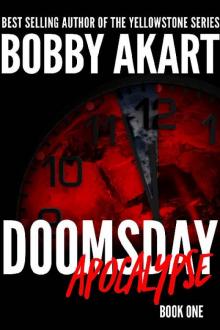 Doomsday Apocalypse
Doomsday Apocalypse Nuclear Winter Desolation: Post Apocalyptic Survival Thriller (Nuclear Winter Series Book 5)
Nuclear Winter Desolation: Post Apocalyptic Survival Thriller (Nuclear Winter Series Book 5)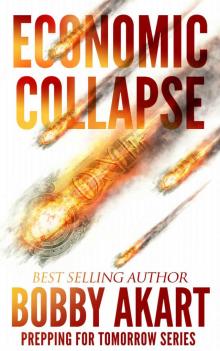 Economic Collapse (Prepping for Tomorrow Book 2)
Economic Collapse (Prepping for Tomorrow Book 2) Nuclear Winter Armageddon
Nuclear Winter Armageddon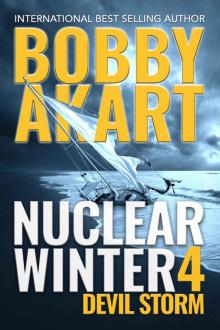 Nuclear Winter Devil Storm
Nuclear Winter Devil Storm Virus Hunters 3: A Medical Thriller
Virus Hunters 3: A Medical Thriller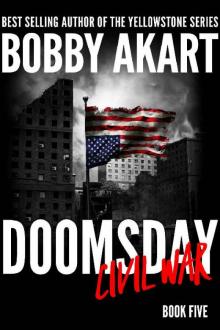 Doomsday Civil War: A Post-Apocalyptic Survival Thriller (The Doomsday Series Book 5)
Doomsday Civil War: A Post-Apocalyptic Survival Thriller (The Doomsday Series Book 5) Asteroid Destruction
Asteroid Destruction Geostorm the Shift
Geostorm the Shift Asteroid Discovery
Asteroid Discovery Virus Hunters 2: A Medical Thriller
Virus Hunters 2: A Medical Thriller Geostorm The Shift: A Post-Apocalyptic EMP Survival Thriller (The Geostorm Series Book 1)
Geostorm The Shift: A Post-Apocalyptic EMP Survival Thriller (The Geostorm Series Book 1) Asteroid Diversion
Asteroid Diversion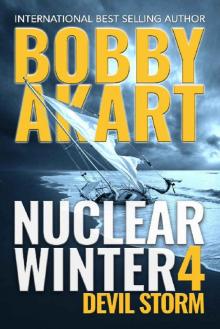 Nuclear Winter Devil Storm: Post Apocalyptic Survival Thriller (Nuclear Winter Series Book 4)
Nuclear Winter Devil Storm: Post Apocalyptic Survival Thriller (Nuclear Winter Series Book 4) Geostorm The Pulse: A Post Apocalyptic EMP Survival Thriller (The Geostorm Series Book 2)
Geostorm The Pulse: A Post Apocalyptic EMP Survival Thriller (The Geostorm Series Book 2) Yellowstone: Survival: A Post-Apocalyptic Survival Thriller (The Yellowstone Series Book 4)
Yellowstone: Survival: A Post-Apocalyptic Survival Thriller (The Yellowstone Series Book 4)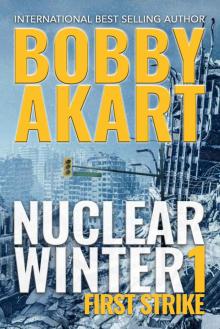 Nuclear Winter First Strike: Post-Apocalyptic Survival Thriller
Nuclear Winter First Strike: Post-Apocalyptic Survival Thriller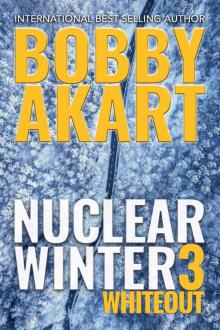 Nuclear Winter Whiteout
Nuclear Winter Whiteout Doomsday Anarchy
Doomsday Anarchy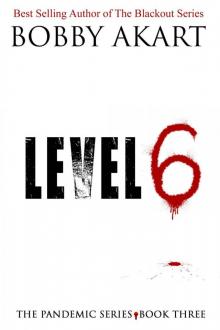 Pandemic: Level 6: A Post Apocalyptic Medical Thriller Fiction Series (The Pandemic Series Book 3)
Pandemic: Level 6: A Post Apocalyptic Medical Thriller Fiction Series (The Pandemic Series Book 3)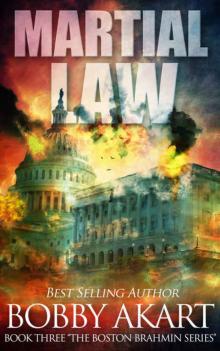 Martial Law
Martial Law Odessa Reborn: A Terrorism Thriller (Gunner Fox Book 4)
Odessa Reborn: A Terrorism Thriller (Gunner Fox Book 4)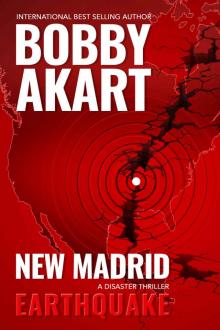 New Madrid Earthquake
New Madrid Earthquake Beyond Borders: Post Apocalyptic EMP Survival Fiction (The Lone Star Series Book 2)
Beyond Borders: Post Apocalyptic EMP Survival Fiction (The Lone Star Series Book 2)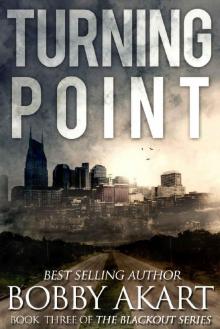 The Blackout Series (Book 3): Turning Point
The Blackout Series (Book 3): Turning Point Patriot's Farewell: A Political Thriller Fiction Series (Boston Brahmin Political Thrillers Book 7)
Patriot's Farewell: A Political Thriller Fiction Series (Boston Brahmin Political Thrillers Book 7) Lines in the Sand_Post Apocalyptic EMP Survival Fiction
Lines in the Sand_Post Apocalyptic EMP Survival Fiction The Mechanics: A Post-Apocalyptic Fiction Series
The Mechanics: A Post-Apocalyptic Fiction Series The Loyal Nine
The Loyal Nine Axis of Evil
Axis of Evil Axis of Evil: Post Apocalyptic EMP Survival Fiction (The Lone Star Series Book 1)
Axis of Evil: Post Apocalyptic EMP Survival Fiction (The Lone Star Series Book 1) Lines in the Sand: Post Apocalyptic EMP Survival Fiction (The Lone Star Series Book 3)
Lines in the Sand: Post Apocalyptic EMP Survival Fiction (The Lone Star Series Book 3) Odessa Strikes
Odessa Strikes The Blackout Series (Book 4): Shiloh Ranch
The Blackout Series (Book 4): Shiloh Ranch Hornet's Nest: A Post Apocalyptic EMP Survival Fiction Series (The Blackout Series Book 5)
Hornet's Nest: A Post Apocalyptic EMP Survival Fiction Series (The Blackout Series Book 5) Yellowstone: Fallout: A Post-Apocalyptic Survival Thriller (The Yellowstone Series Book 3)
Yellowstone: Fallout: A Post-Apocalyptic Survival Thriller (The Yellowstone Series Book 3) Electromagnetic Pulse
Electromagnetic Pulse Texas Strong: Post Apocalyptic EMP Survival Fiction (The Lone Star Series Book 4)
Texas Strong: Post Apocalyptic EMP Survival Fiction (The Lone Star Series Book 4) Fifth Column_Post Apocalyptic EMP Survival Fiction
Fifth Column_Post Apocalyptic EMP Survival Fiction Patriot's Farewell
Patriot's Farewell Texas Strong_Post Apocalyptic EMP Survival Fiction
Texas Strong_Post Apocalyptic EMP Survival Fiction Pandemic: The Innocents: A Post-Apocalyptic Medical Thriller Fiction Series (The Pandemic Series Book 2)
Pandemic: The Innocents: A Post-Apocalyptic Medical Thriller Fiction Series (The Pandemic Series Book 2) Shiloh Ranch: A Post Apocalyptic EMP Survival Fiction Series (The Blackout Series Book 4)
Shiloh Ranch: A Post Apocalyptic EMP Survival Fiction Series (The Blackout Series Book 4) Cyber Attack
Cyber Attack Beyond Borders
Beyond Borders Choose Freedom: A Post-Apocalyptic Fiction Series (The Boston Brahmin Book 6)
Choose Freedom: A Post-Apocalyptic Fiction Series (The Boston Brahmin Book 6) False Flag
False Flag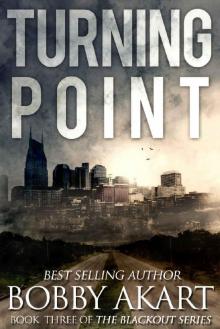 Turning Point: A Post Apocalyptic EMP Survival Fiction Series (The Blackout Series Book 3)
Turning Point: A Post Apocalyptic EMP Survival Fiction Series (The Blackout Series Book 3)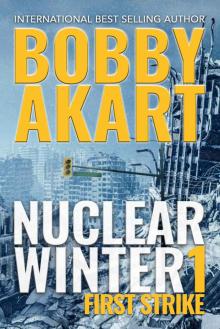 Nuclear Winter First Strike
Nuclear Winter First Strike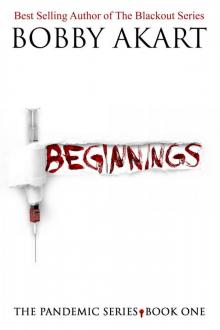 Pandemic: Beginnings: A Post-Apocalyptic Medical Thriller Fiction Series (The Pandemic Series Book 1)
Pandemic: Beginnings: A Post-Apocalyptic Medical Thriller Fiction Series (The Pandemic Series Book 1) Devil's Homecoming: A Post Apocalyptic EMP Survival Fiction Series (The Blackout Series Book 6)
Devil's Homecoming: A Post Apocalyptic EMP Survival Fiction Series (The Blackout Series Book 6) The Blackout Series (Book 6): Devil's Homecoming
The Blackout Series (Book 6): Devil's Homecoming Yellowstone: Inferno: A Post-Apocalyptic Survival Thriller (The Yellowstone Series Book 2)
Yellowstone: Inferno: A Post-Apocalyptic Survival Thriller (The Yellowstone Series Book 2) Fifth Column: Post Apocalyptic EMP Survival Fiction (The Lone Star Series Book 5)
Fifth Column: Post Apocalyptic EMP Survival Fiction (The Lone Star Series Book 5) Yellowstone: Hellfire: A Post-Apocalyptic Survival Thriller (The Yellowstone Series Book 1)
Yellowstone: Hellfire: A Post-Apocalyptic Survival Thriller (The Yellowstone Series Book 1) The Blackout Series (Book 2): Zero Hour
The Blackout Series (Book 2): Zero Hour Suicide Six: Post Apocalyptic EMP Survival Fiction (The Lone Star Series Book 6)
Suicide Six: Post Apocalyptic EMP Survival Fiction (The Lone Star Series Book 6) Suicide Six_Post Apocalyptic EMP Survival Fiction
Suicide Six_Post Apocalyptic EMP Survival Fiction Zero Hour: A Post-Apocalyptic EMP Survival Fiction Series (The Blackout Series Book 2)
Zero Hour: A Post-Apocalyptic EMP Survival Fiction Series (The Blackout Series Book 2) Beyond Borders_Post Apocalyptic EMP Survival Fiction
Beyond Borders_Post Apocalyptic EMP Survival Fiction Pandemic: Quietus: A Post-Apocalyptic Dystopian Fiction Series (The Pandemic Series Book 4)
Pandemic: Quietus: A Post-Apocalyptic Dystopian Fiction Series (The Pandemic Series Book 4) 36 Hours: A Post-Apocalyptic EMP Survival Fiction Series
36 Hours: A Post-Apocalyptic EMP Survival Fiction Series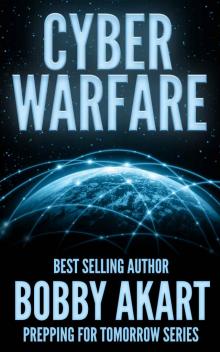 Cyber Warfare
Cyber Warfare